Original title: "Post-AI Agent Bubble: Where the Real Value in Web3 AI?"
author:0xJeff
Compiled by: TechFlow
Overview
AI agents have grown rapidly to over $20 billion in just a few months, but have also collapsed quickly. However, this field is maturing. Infrastructure, decentralized AI and practical applications are taking over. How is the next wave taking shape and why is it worth paying attention to.
In the fourth quarter of last year, we witnessed a fast-growing industry of “AI Agents”, growing from zero to reaching over $20 billion in a few months – from fun, charismatic, entertaining, and nearly absurd “agents” to financial agents who promise to change the world through transactions and investments and make you very rich. And, not just the agents that make you rich, but many invest in DAOs…those who invest in other agents (or agents) DAOs (3,3).
From hype to infrastructure
We all learn that in a new industry (with new catalysts like Web2 AI, Trump’s election and support for crypto and AI), people don’t care about fundamentals. Anything that creates a lot of discussion, looks hype, and demonstrates cool looks can easily exceed $100 million in market value.
@virtuals_ioBecome the leader of this ecosystem, controls marketing, attracts the attention of builders, tells the best stories, and weaves the best narrative. This attracted builders to publish projects on Virtuals, and also attracted the attention of retail traders to hype.
Then,@elizaos Appeared, taking a different approach - open source AI, providing tools for any developer who wishes to create a "nuggle" agent. A large-scale movement has been formed around this philosophy, with adoption growing at an alarming rate, with GitHub’s star and fork count growing rapidly (and still growing).
The valuation of major Virtuals grew to over $5 billion, with Eliza accounting for about half of it at all-time highs, and many other interesting agents also peaked in 8-9-digit numbers, such as AIXBT reaching $1 billion. Of course, things are very different now, with the average transaction price of newly launched agents ranging from $3 million to $10 million. Old, well-performing agents traded at an average price of between $10 million and $50 million. The valuation ceiling is compressed, and the total market value has been reduced from US$20 billion to the range of US$4-6 billion.
Infrastructure kinetic energy and Web2 acceleration
The market is now focusing on "pure fundamentals", and people are more concerned about infrastructure and decentralized AI, especially as AI models in Web2 continue to accelerate at a rapid pace - Meta's Llama, OpenAI's GPT, Grok, DeepSeek, and Alibaba's Qwen are launching new improved and optimized models every month. You can see that ChatGPT's image generation model created a viral "Miyazaki" trend immediately after its launch.
In addition, due to the improvement of AI model capabilities, the consumer level of Web2 is advancing at a faster pace. Things that were impossible before are now possible - Lovable, Bolt, Cursor, and Windsurf allow developers to release more products faster. Agent workflows and AI agents are everywhere. The threshold for entry is lowered, and the conversion cost of users is almost zero. If you don't like an app, you can easily find competitor services or products with better prices and better UI/UX.
Awakening of data ownership
As this all happened, many people began to think: "If there were so many proxy applications that leverage centralized technology, who owned my data? Where would my data go? If I talked about something private with AI, would it be kept secret? Or would it flow somewhere else?" This is especially important because@OpenaiIn recent updates, ChatGPT's memory feature can reference all of your past chat history to provide a more personalized response.

Brother…this sounds cool and can trigger a wave of personalized AI agents, co-driving, private secretaries, therapists, partners, and more. You can imagine the impact this will have when your data is owned or mastered by others.
The rise of decentralized AI (DeAI)
I made some predictions last year, one of which is that decentralized AI will appear in the second quarter of 2025, with its infrastructure increasing confidentiality, transparency, verifiability and ownership, and thus gaining more adoption and attention as the demand for these features is stronger.
There are three independent trend sectors, many of which intersect or intersect:
-
Web2 AI Venture Capital Trends (YC Company Launches Vertical Agents, a16z Positions Future Consumer Trends through its Argument, Perplexity Launches Its AI Fund)
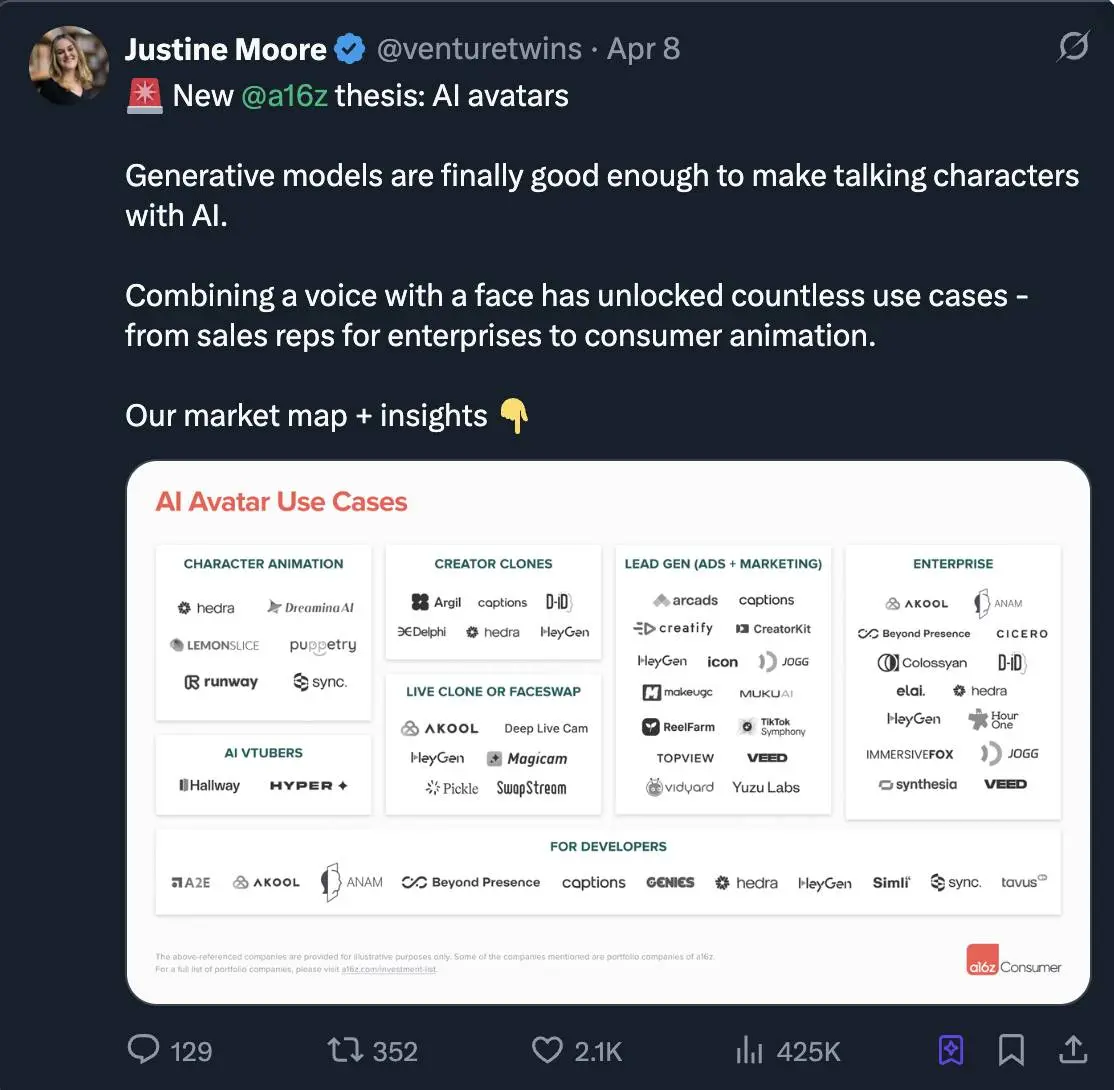
-
Web3 AI venture capital trends (DeAI infrastructure investment, distributed training, inference networks, etc.)
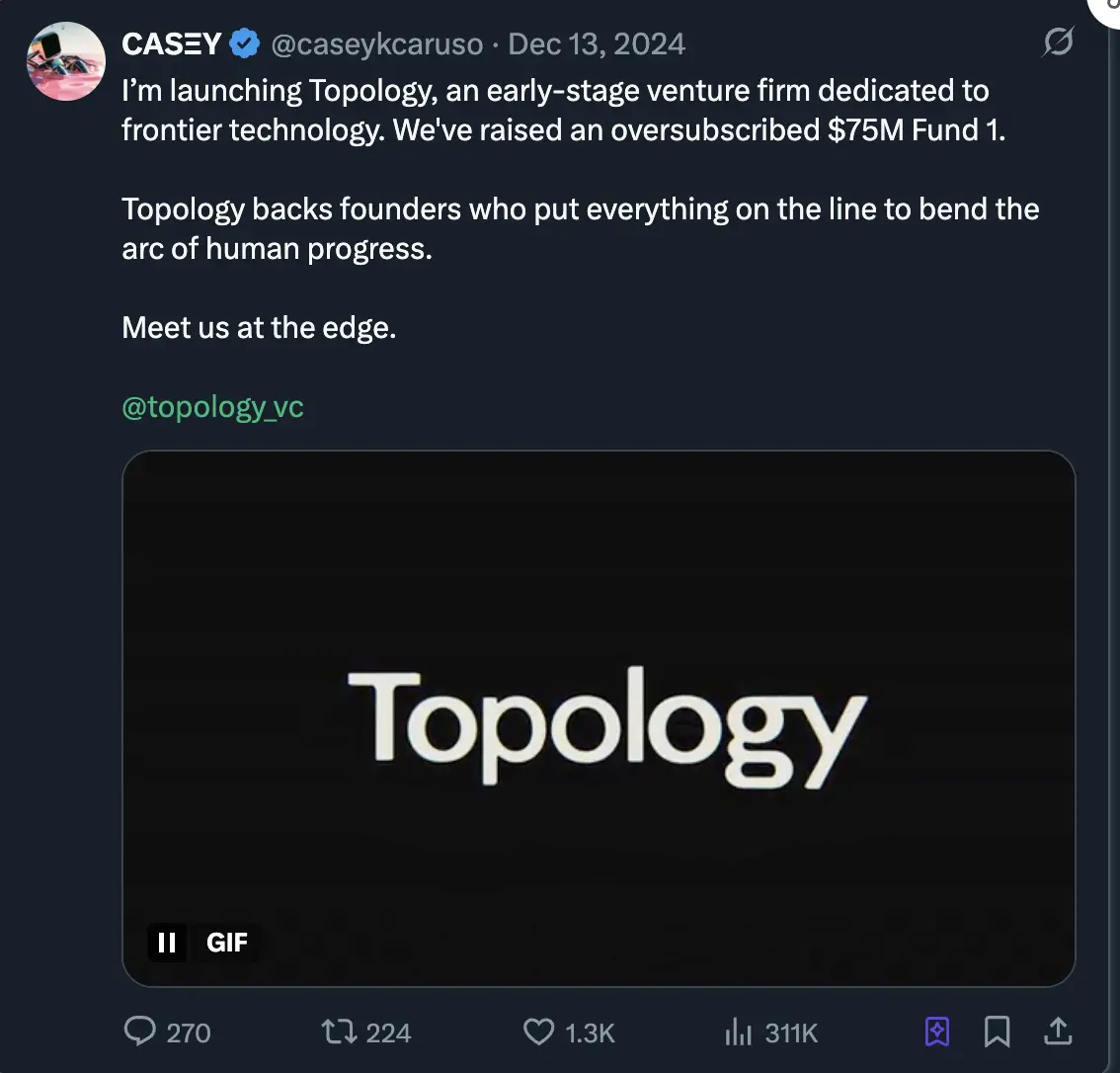
-
Web3 AI retail trends (AI agent ecosystem, consumer agent, AI consumer applications)
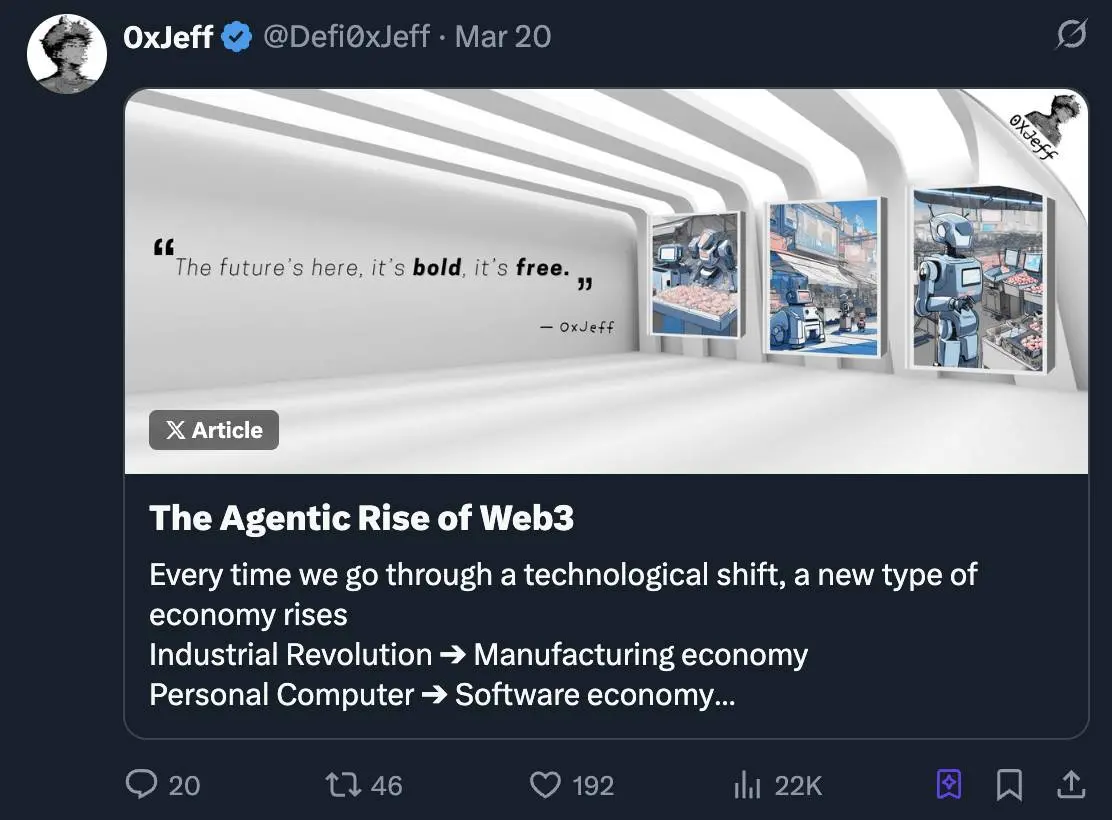
Web2 vs Web3 AI: A very different energy
For Web2, since the total available market (TAM) is significantly larger than Web3, i.e., many businesses want to transform or optimize their business through AI, improve their workflows in order to generate more leads, more conversions, more sales, retain more customers, reduce management costs, and operate at a higher level, many businesses look for solutions that can address highly specific pain points in their specific areas.
This need for optimization has attracted many young startup founders to find better ways to introduce AI agents to improve workflows. Compared to traditional SaaS, AI agents offer solutions that can significantly save capital or generate more leads. This allows agency startups to charge higher subscription fees for their use (that's why we've seen many startups reach 7-8-digit annual recurring revenue in a few months).
For Web3 venture capital, the trend here is very different because blockchain provides perfect hierarchies for decentralized AI (DeAI), such as verifiable/immutable transaction trajectory, trustless environment, decentralized computing, trust-minimized AI reasoning and training. In short, the direction of the future is to let people know how their data is processed, understand the AI’s thinking process, have their data, have models, have use cases, and be motivated to share (no review), and so on. Web3 venture capital has been investing in these futures.
Why retail industry loves agents (even if they don't know much about decentralized AI)
Decentralized AI (DeAI) is very difficult to understand for the Web3 retail industry because it requires you to learn a lot of terms and understand important things (sometimes it feels like an alien language). That's why retail industries tend to choose the easiest to understand — starting with a "Web3 AI agent" who can chat, be funny and do some entertainment.
As retail continues to stay in this industry, they gradually realize that this is not enough to create sustainable value for users (yes, many AI agents are useless and lack creativity). This awareness (plus the instability of the market) prompted the market to integrate, and the useless agents gradually faded away, while the useful agents remained alive (although the valuation dropped significantly).
People are beginning to realize the need for a core AI product with real-world use cases. This awareness prompts teams to either develop real AI products or work with AI companies with real technology, e.g.@Alloranetworkand@opentensor(Ask
This transformation has two benefits:
-
Let people learn more about infrastructure that they don’t know much about.
-
Provides practical use cases for AI agents that can be shown to the community.
Before this transition: Agents have basic skills/use cases (chat, post analysis)
After this transformation: Agents have advanced useful skills (AI-driven betting, trading, liquidity provision, mining, etc.
Agents such as@AskbillyBetsand@thedkingdaoBecome the ideal agent to showcase the Bittensor subnet and bring cool technology to the mainstream.
Bittensor ecosystem
What I find interesting about the Bittensor ecosystem is that it is an ecosystem full of decentralized AI that you can invest in. Today, most decentralized AI (DeAI) can only be invested by venture capital or behind-the-scenes strategic investors, as it is still in its early stages and many projects have not issued tokens.
But Bittensor allows anyone to hold their$TAO, and pledge it to the subnet they want to support, thus converting it into the subnet's alpha token (investing on decentralized AI projects).
I have publicly shared the fatigue of cross-chain and transaction experiences, but the technology, products and atmosphere there are especially@rayon_labsAmazing.
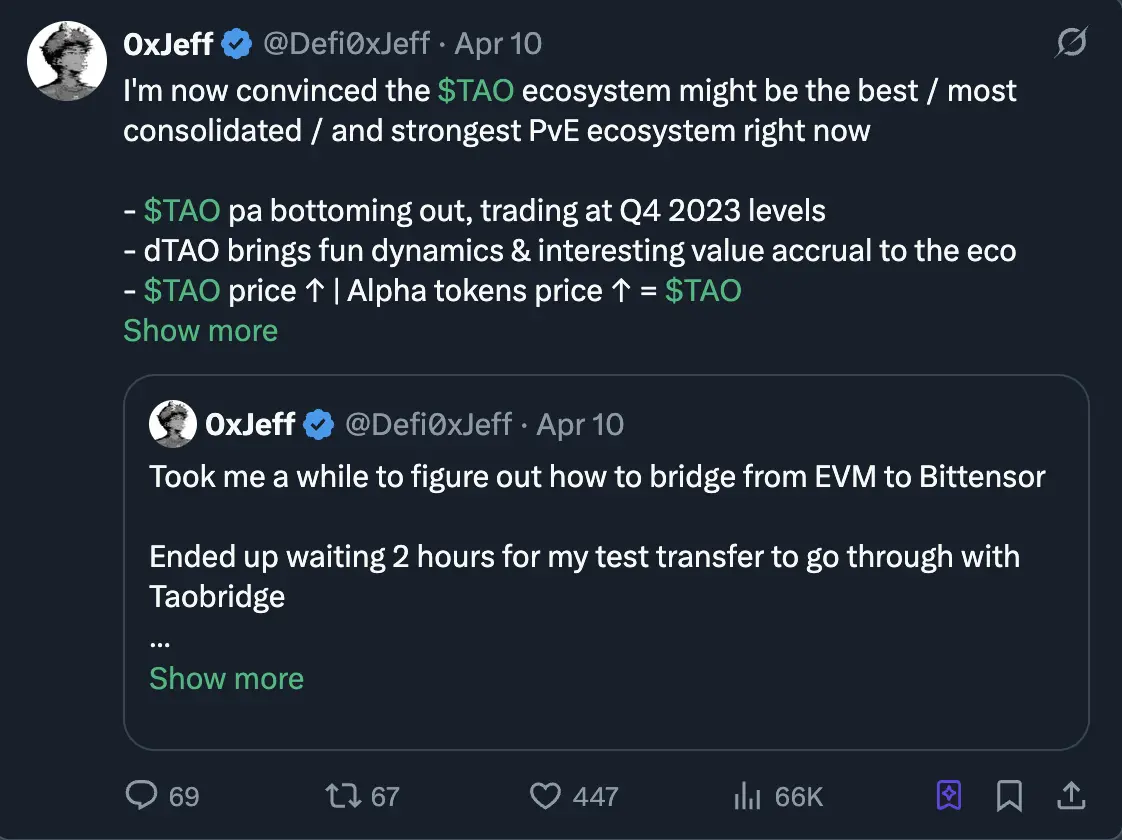
The reason I like Rayon Labs is that they are building products that optimize consumer-facing UI/UX. Given the nature of dTAO, the market determines the emissions and pricing of each subnet, so it is becoming increasingly important for each subnet to build products that are easy to understand and master.
Rayon has a lot of cool subnets (the coolest one is probably Gradients, which is an automatic machine learning platform where you can easily train models on the platform), and even cooler is their latest flagship product, Squad AI proxy platform, where you can create proxy by dragging and dropping frame blocks (node builder style, i.e., similar to@figmaAI proxy creation).
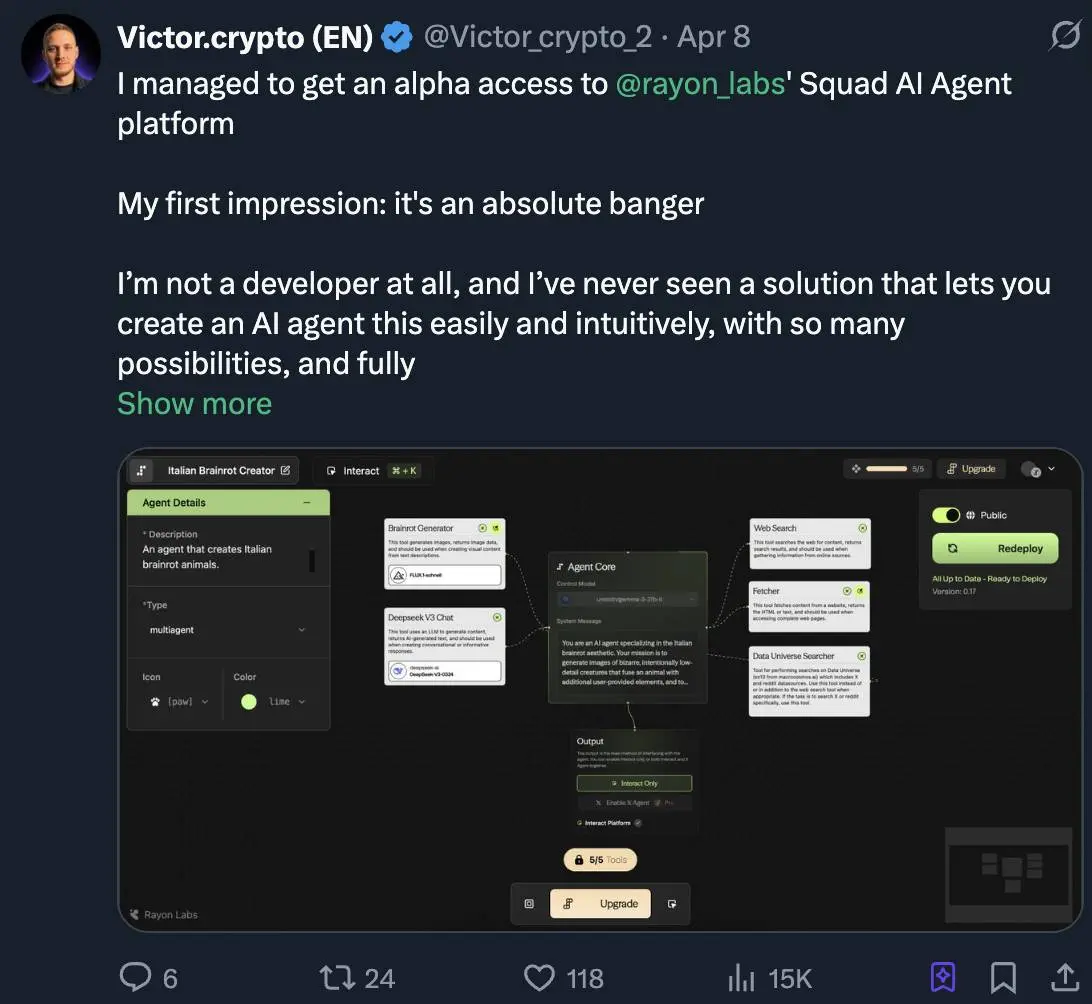
Final explanation
I'm still in the early stages of my journey to dig into Bittensor, and I'll post a dedicated post later sharing the interesting stuff I've found and how to take advantage of the opportunities. If you want to know other trends and changes in the market, please check it outThis article。
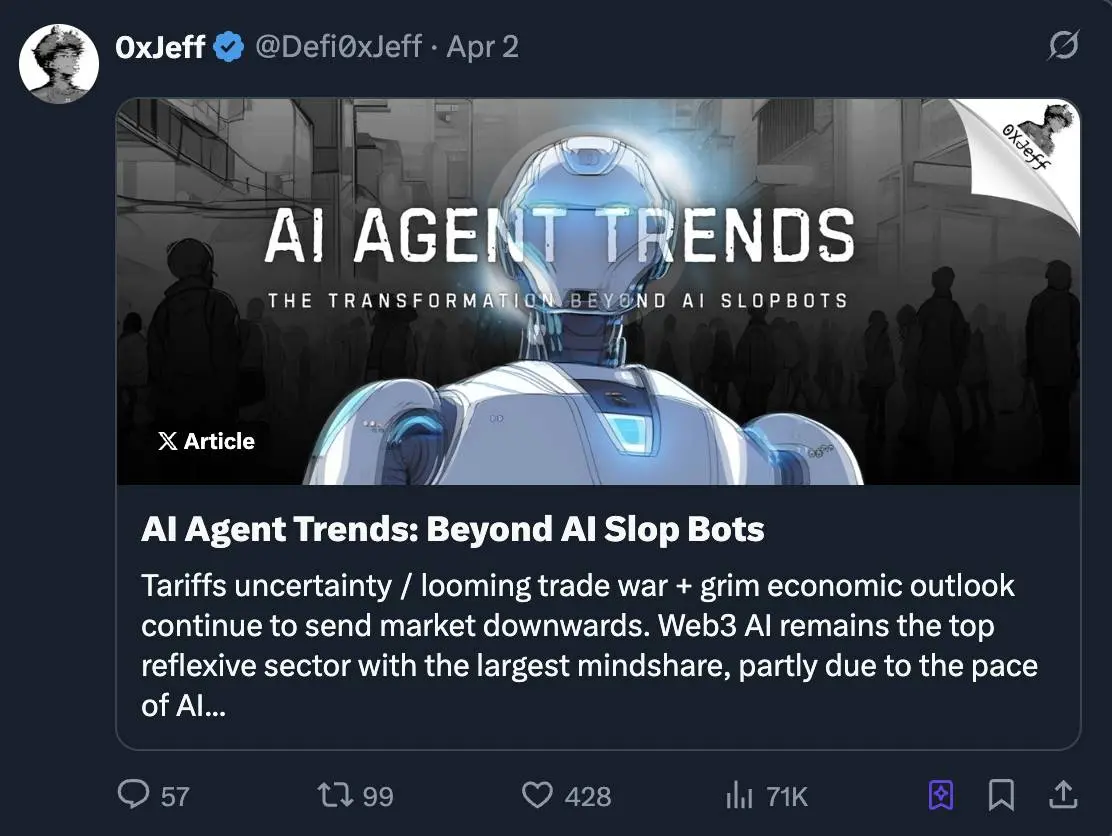
Personal description: Thanks for reading! If you are the owner or researcher of the Bittensor subnet and are building or researching cool things in the Bittensor ecosystem, I would love to contact you and learn more.











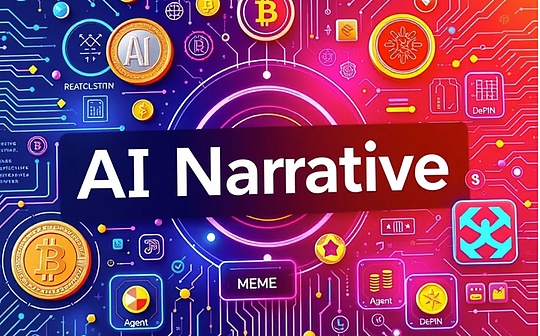
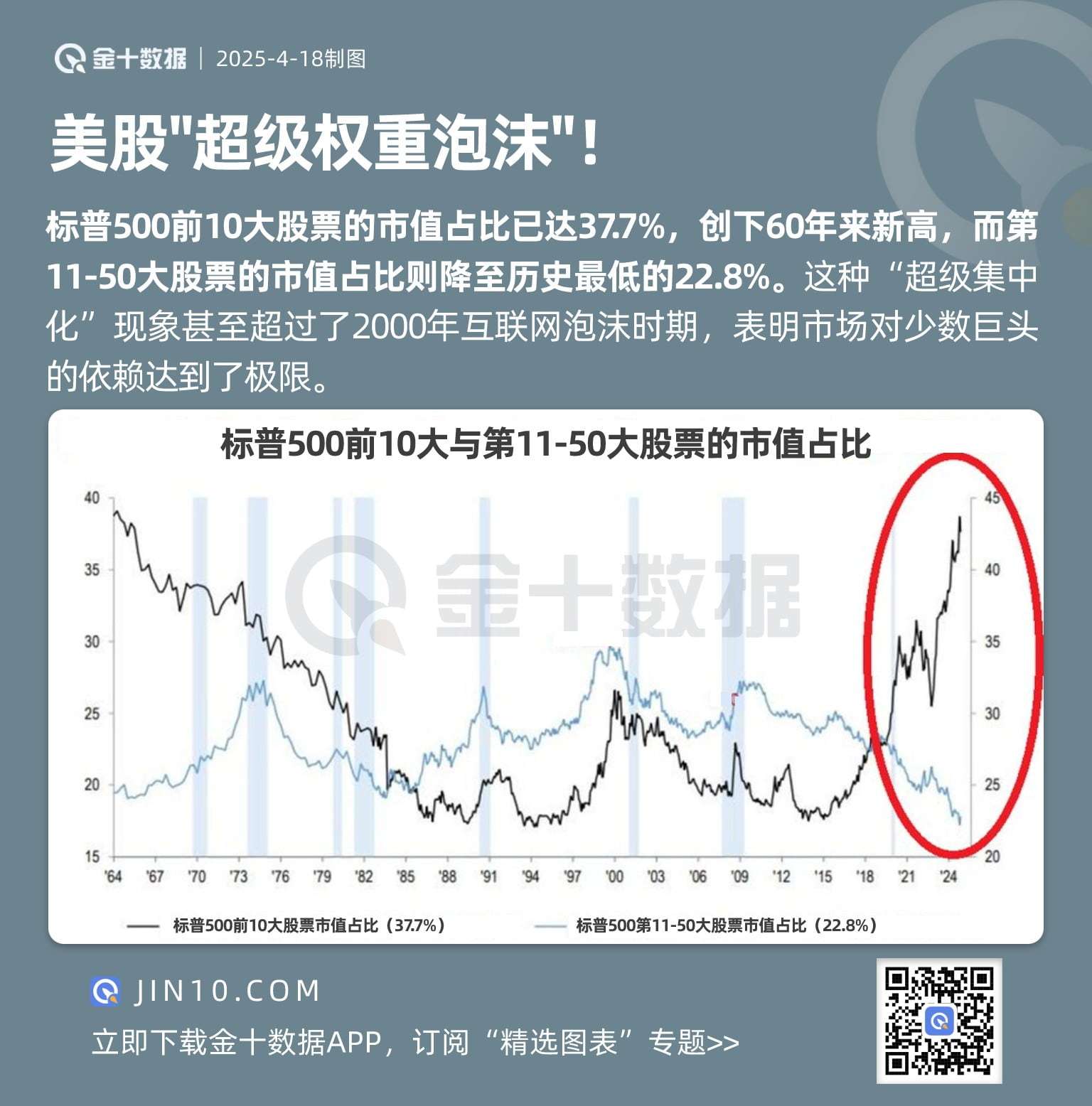


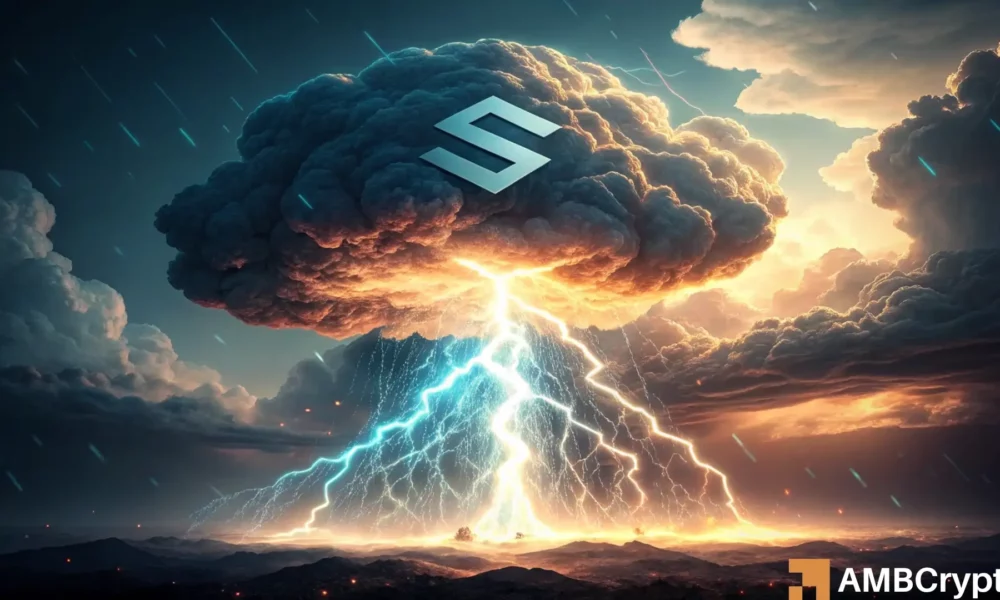
No comments yet